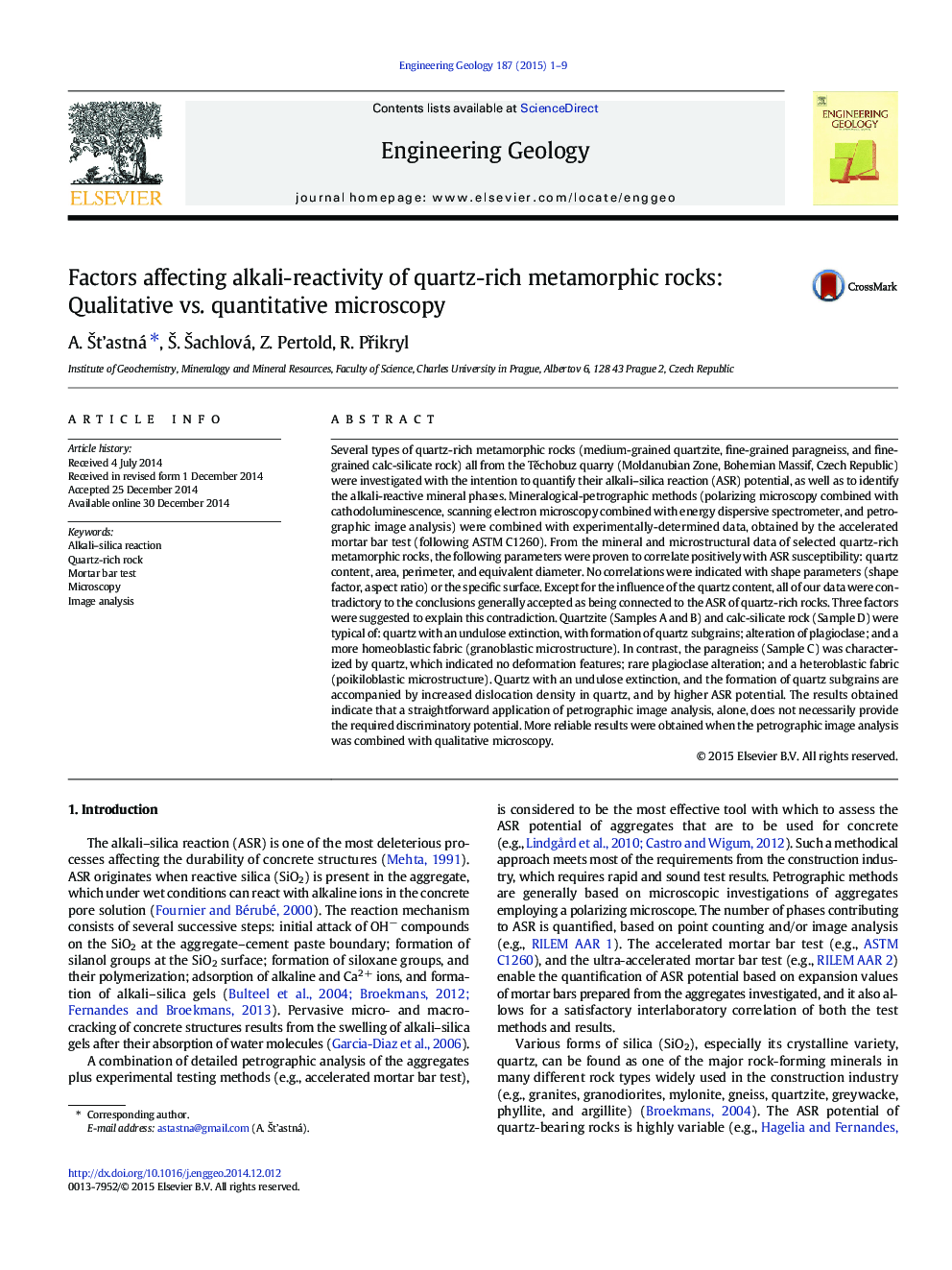| کد مقاله | کد نشریه | سال انتشار | مقاله انگلیسی | نسخه تمام متن |
|---|---|---|---|---|
| 4743390 | 1641798 | 2015 | 9 صفحه PDF | دانلود رایگان |
• The combination of the mortar bar test with microscopic techniques was used.
• The petrographic image analysis was combined with qualitative microscopy.
• Three types of quartz-rich rocks coming from one quarry were distinguished.
• Mineral phases, microfabric and alkali–silica reaction potential were quantified.
• Alkali–silica reaction potential and alkali-reactive mineral phases were examined.
Several types of quartz-rich metamorphic rocks (medium-grained quartzite, fine-grained paragneiss, and fine-grained calc-silicate rock) all from the Těchobuz quarry (Moldanubian Zone, Bohemian Massif, Czech Republic) were investigated with the intention to quantify their alkali–silica reaction (ASR) potential, as well as to identify the alkali-reactive mineral phases. Mineralogical-petrographic methods (polarizing microscopy combined with cathodoluminescence, scanning electron microscopy combined with energy dispersive spectrometer, and petrographic image analysis) were combined with experimentally-determined data, obtained by the accelerated mortar bar test (following ASTM C1260). From the mineral and microstructural data of selected quartz-rich metamorphic rocks, the following parameters were proven to correlate positively with ASR susceptibility: quartz content, area, perimeter, and equivalent diameter. No correlations were indicated with shape parameters (shape factor, aspect ratio) or the specific surface. Except for the influence of the quartz content, all of our data were contradictory to the conclusions generally accepted as being connected to the ASR of quartz-rich rocks. Three factors were suggested to explain this contradiction. Quartzite (Samples A and B) and calc-silicate rock (Sample D) were typical of: quartz with an undulose extinction, with formation of quartz subgrains; alteration of plagioclase; and a more homeoblastic fabric (granoblastic microstructure). In contrast, the paragneiss (Sample C) was characterized by quartz, which indicated no deformation features; rare plagioclase alteration; and a heteroblastic fabric (poikiloblastic microstructure). Quartz with an undulose extinction, and the formation of quartz subgrains are accompanied by increased dislocation density in quartz, and by higher ASR potential. The results obtained indicate that a straightforward application of petrographic image analysis, alone, does not necessarily provide the required discriminatory potential. More reliable results were obtained when the petrographic image analysis was combined with qualitative microscopy.
Journal: Engineering Geology - Volume 187, 17 March 2015, Pages 1–9
